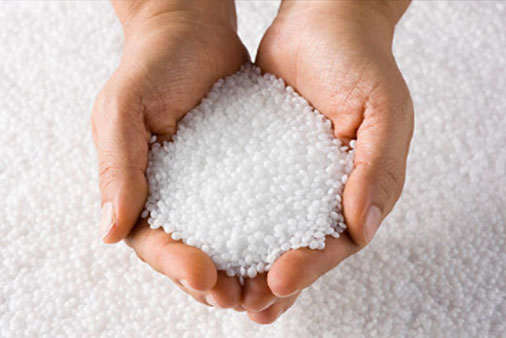POLY-L OCP 2022
OCP Viscosity Index Improver
Product Description
Poly-L OCP 2022 is a Viscosity Index Improver in a solid pellet form. It is recommended for use as a VI Improver when formulating multi-grade & Monograde engine oils. It has Excellent low temperature properties to passenger car motor oils and heavy duty engine oils and an Excellent shear stability.
Properties
| Material Properties |
| Appearance (Visual) White pellets |
| Density (ASTM D1501) 0.870 |
| Ash Content, mass % (ASTM D 5667) 0.1 maximum |
| K Viscosity 11% SN150/100C (cSt) (ASTM D445) 1030 |
| Pour Point 10% SN500 + 0.3% PPD (ASTM 97) -18 |
Typical solution
In 150 LP Base Oil
Permanent shear (ASTM D 6278) 22
Stability Index, % (ASTM D 6022) 22
Kinematic Viscosity (ASTM D 445)
(@100°C),cSt 13.1
- These are typical properties only and are not to be regarded as sales specification
- Based on 1% polymer in base oil
- Key Benefits
Excellent low temperature properties
Excellent Shear stability
Pellet form, easy to handle
Easy to dissolve
Cost effective VI Improver
Covers key Approvals (ACEA, Daimler, Volvo…) when used with the appropriate package
Applicable in a wide range of base oils
Other Properties of 12.0% wt. Poly-L OCP 2022 dissolved in ExxonMobil 150N Group 11 Base oils
Colour, ASTM D1500: 0.5
Density at 15°C, g/ml: 0.87
Flash Point, °C (PMCC): 215
Kinematic Viscosity at 100˚C, mm2/s: 1090
Kinematic Viscosity at 40˚C, mm2/s: 13,500
SSI 1 (Bosch) ASTM D6278, % TP Loss: 20.9
Thickening Power 1 at 100˚C, cSt: 6.45
Recommended Dosage
Poly-L OCP 2022 may be dissolved in a wide range of base oils at 11.0% wt. to produce a liquid Poly-L OCP 2022 Viscosity Index Improver. The following chart includes typical treat-rates for Poly-L OCP 2022 additive:
SAE J 300 Viscosity Grade Liquid Poly-L OCP 2022 Treat, % wt.
5W40 10 — 12
10W40 8 — 10
15W40 7 — 9
20W50 11 — 13
Handling Information
Poly-L OCP 2022 should be stored below 70°C, as higher temperature may cause the pellets to agglomerate .Avoid contact with direct sunlight for long period of time.
Dissolving is carried out between 90 °C and 145 °C with proper agitation. Maximum blending temperature not to exceed 150°C as this may darken the oil.

